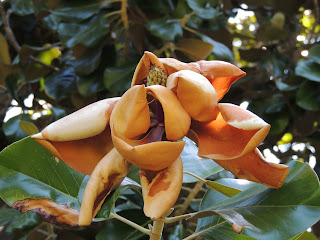

Mare Island Naval Shipyard has a history reaching back to the year of 1775.

A summer visit to Mare Island was a lovely and haunting stroll through a vista held captive by both past and present.

It is one of those unique landscapes that belong to time rather than place.

In 1775, Spanish explorer Perez Ayala was the first European to land on what would become Mare Island - he named it Isla de la Plana. This area was part of Rancho Suscol, deeded to General Mariano Guadalupe Vallejo in 1844. It became a waypoint for early settlers.
In 1835, whilst traversing the Carquinez Strait, a crude ferry transporting men and livestock capsized in a squall.
Among the livestock feared lost in the wreckage was the prized white mare of General Mariano Guadalupe Vallejo, the Mexican Commandante for Northern California.
Several days later, General Vallejo's mare was found on the island, having swum ashore. Grateful for the fortunate turn of events, he renamed the island to Isla de la Yegua, Spanish for Mare Island, in her honor.

The Mare Island Naval Shipyard (MINSY) was the first United States Navy base established on the Pacific Ocean in around 1865. It is located 25 miles northeast of San Francisco in Vallejo, California.

The Napa River goes through the Mare Island Strait and separates the peninsula shipyard (Mare Island, California) from the main portion of the city of Vallejo.

MINSY made a name for itself as the premier US West Coast submarine port as well as serving as the controlling force in San Francisco Bay Area shipbuilding efforts during World War II.

The base closed in 1996 and has gone through several redevelopment phases.

It was registered as a California Historical Landmark in 1960, and parts of it were declared a National Historic Landmark District in 1975.

Mare Island has a stunning variety of trees for one of the original naval commandeers requested that sailors bring back tree seeds from around the world.

Thus here stands a towering palm tree.

And others grace historical houses where Naval Officers and their families dwelled. Several of these buildings are currently residences of private individuals or used as offices.

Several of the houses were emptied and I was able to peer into large windows on graceful porches for a view of old world, oak charm.

I can imagine an old fashioned key going into an engraved lock.

Peering into another window I found a magical moment where the past and present collided.

I am standing on a porch and peering straight back into time.

And in another second encountering the presence in the form of an occupied house.

Many old structures carry their own untold stories and are as subtle as a haunting.

They are found everywhere and from all vistas.

And Here:

And this:

The little person with me was fascinated by the crumbling submarine factory and various cranes.

This is a view of the ghost hospital ship used in wartime.

These structures are located near the entrance to the shipyard at Mare Island.

Finally after a drowsy August day of wandering through history we say goodbye to Mare Island and our last glimpses of the old military homes.

And the wildflowers growing on the edge of the bay.

The nature reserve is on our left.

Goodbye Mare Island and I hope you continue to be a protected environment. New apartment complexes and a school on the other side suggest that you are vulnerable to encroachment.
There needs to be some places where time stands still as a portal to the past.



















No comments:
Post a Comment